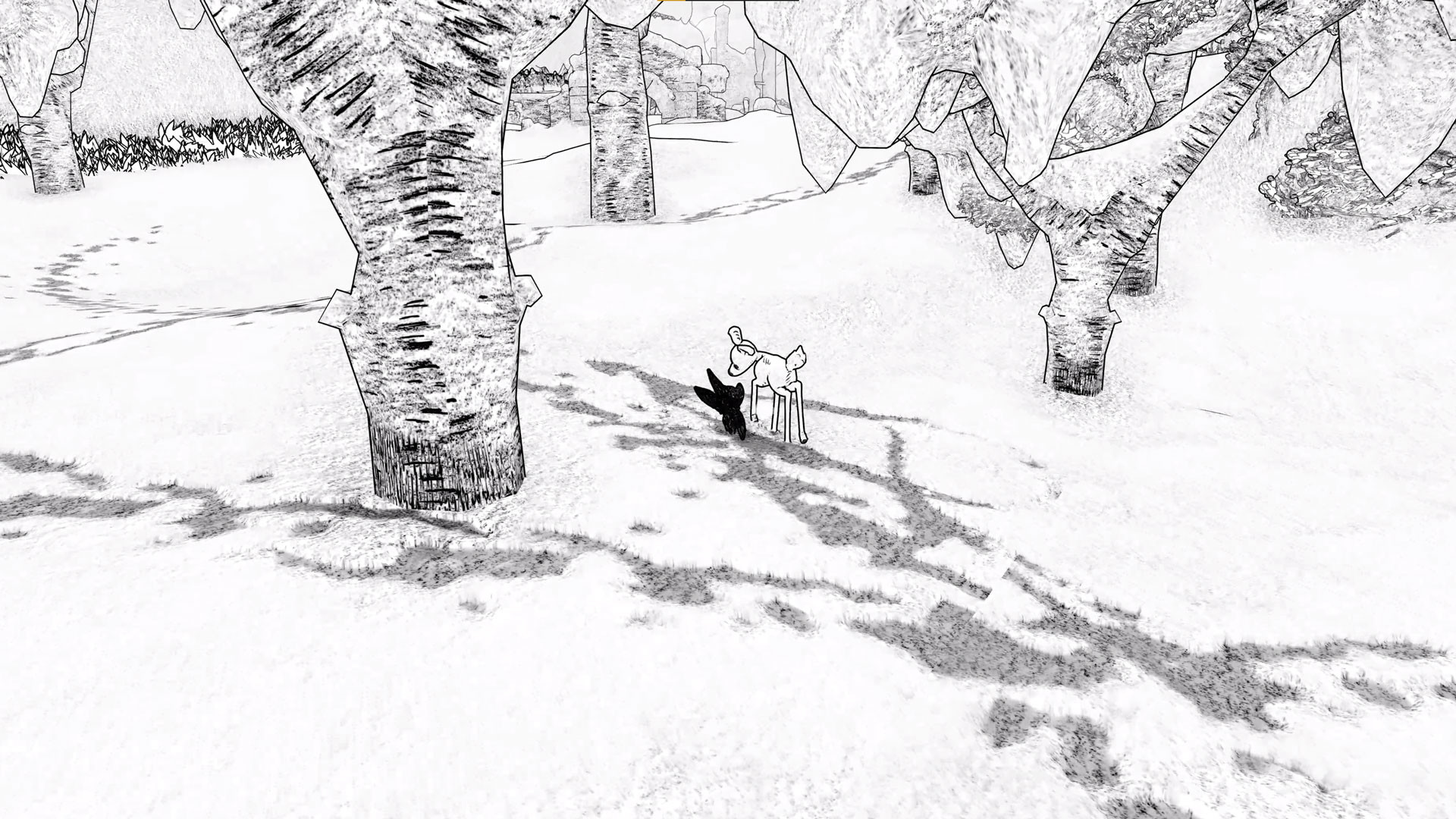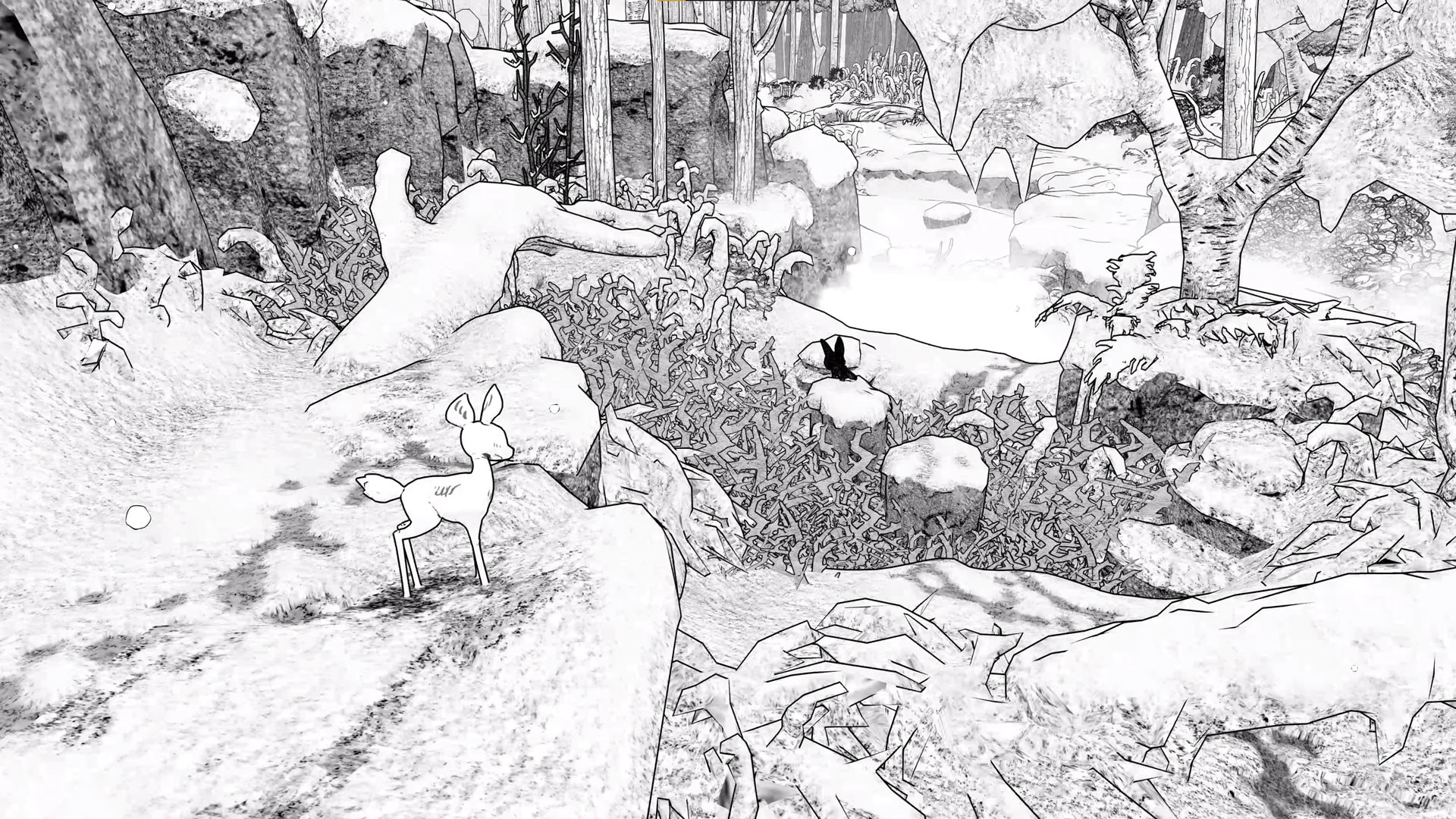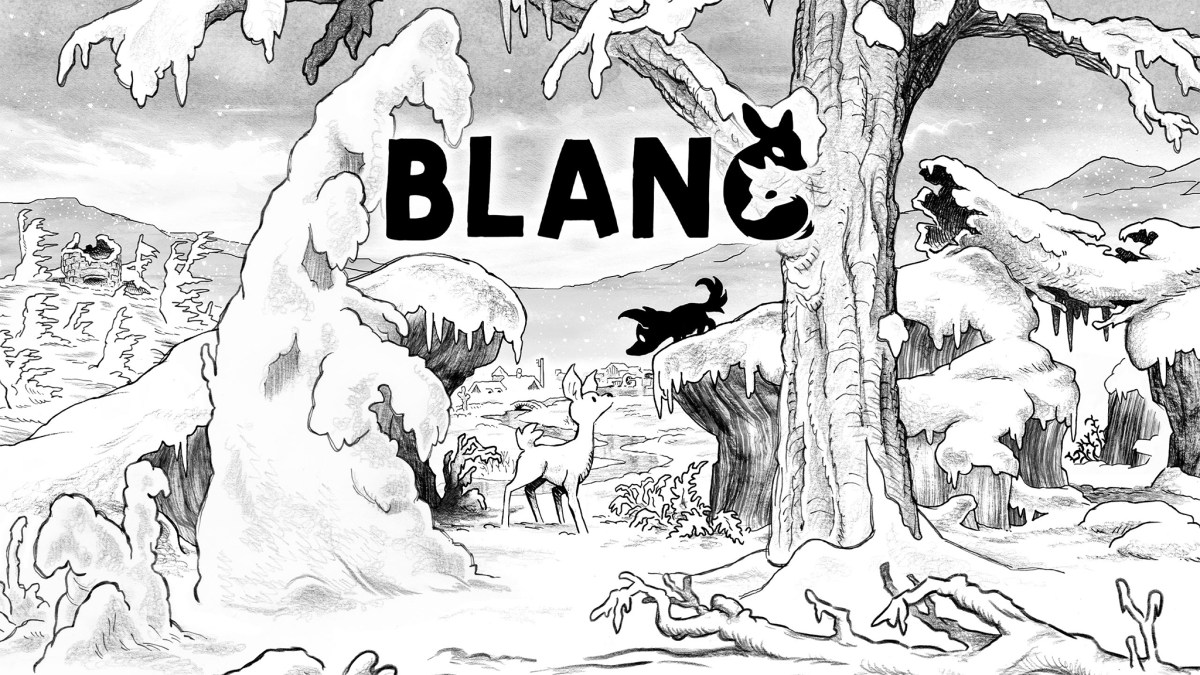It’s somewhat rare that I play games with my wife. Outside of tending to her Animal Crossing island or commanding and marrying off soldiers in the Fire Emblem series, she prefers watching old episodes of the BBC Poirot series or crossing off her ever growing list of films while I plug away at games. But one of the first games we ever bonded over together was Thatgamecompany’s zen indie magnum opus, Journey.
It came out in our last year of college, and we played for the first time surrounded by all our friends only about three weeks before graduation. Needless to say, a game about finding others and helping each other to a new stage of existence felt cloyingly relevant and would subsequently stick with us for years to come. That’s why when trailers for Blanc dropped, I wondered if this would be the first game in over 10 years where we might enjoy playing through together.
Blanc is a French game by developer Casus Ludi about a wolf pup and a fawn who wake up to find their families have lost them in the aftermath of an impressive blizzard. Similar to in games like Journey, the entire objective of Blanc is simply — follow the path. Also similar specifically to Journey, the game has the typical minimalist visual storytelling, plenty of orchestral swells, and some nearly identical level structure and flow. But as the two of us chose to end our run together early after a slew of bugs and frustrating design choices, we agreed that as much as Blanc wanted to be Journey, these inspirations weren’t enough.
There are certainly things to enjoy about Blanc. Being a zen two-player adventure, the game works towards building a sense of camaraderie between players. Things like the small deer boosting the pup up to a higher level, or running through separate paths in tandem, creates this sense of playfulness between the two baby animals, which inherently leads to some pretty adorable moments. And whether you’re teaming up to prevent some baby geese from getting blown away in the wind, or helping a pair of young goats escape their enclosure to join your posse, the game’s puzzles have some engaging “aha” moments once you figure out how to build a solution together.

But those cute, friendly moments that left us saying “daw” out loud became less and less frequent: To get to those heartwarming flourishes, my deer had just missed five jumps due to a targeting issue, or my wife’s wolf got stuck on some scenery that left one of those goslings careening into the bramble for the tenth time in a row.
“Alright, goose, say goodbye to your children,” she said angrily as it waddled all the way back to the start of the puzzle. “Because when we get to wherever we’re going I’m going to eat them.”
As much as one might chalk this up to our collective inexperience in gaming, the several puzzles before we had completed with mechanical ease. But in this particular section of Blanc, a flat stretched camera that was angled to the worst possible sight line was more the culprit for our troubles, and there were numerous other occasions where the answer to a platforming puzzle, or even a path forward, was simply not something the camera was interested in showing.
The game’s art design also doesn’t help at all, with the title Blanc being a bit on the nose of just how much white is in this game. Titles like Return of the Obra Dinn use a black-and-white palette to create an impression of diverse grays with impeccable contrast and artistry. Meanwhile, Blanc’s white canvas is so minimalist that basic things like perspective constantly felt skewed, while levers and other interactable objects were lost in the snow. We both kept saying what a shame it was to pick a single monochromatic color instead of a palette that embraced all the blues and other colors winter has to offer.

As cozy and detailed as some of the village buildings and farmhouses looked, they became hard to admire when they felt like just a giant wall blocking our path and little else. And as beautiful and unique as the art design looked in the trailer, the lack of functionality of incorporating the art into gameplay ruined the beauty that was there.
Blanc’s score was perhaps the strongest aspect of the title, though more akin to titles like Flower with soft piano and chamber orchestra strings. While I’m sure there are countless better examples to compare the game’s OST to, it gave me the charm of the old Little Bear cartoon, which played incredibly well to the themes of exploring the woods and finding charm in the natural world.
Yet these themes of nature also take somewhat of a backseat, trading in the woods and cozy towns for a construction site near the end of the game. And unlike stronger-written titles where this construction would play a major role in themes of conservation, in Blanc those trucks, pipes, and bulldozers are really just an obstacle. And even less immersive, it became a little ridiculous when the path of our hefty buck father pranced across delicate ice-covered cabin rooftops or slippery industrial plumbing lines.
I think I have such harsh opinions on Blanc because I too was inspired by Journey, as its creators very clearly were. There are elements of a charming and meaningful game in there, but with the lack of polish and its refusal to think outside of its design choices, I found myself leaving the game with the same blank expression as the fawn and cub, who were emotionlessly staring at one another as they said their end-of-game goodbyes.






Published: Feb 28, 2023 01:30 pm